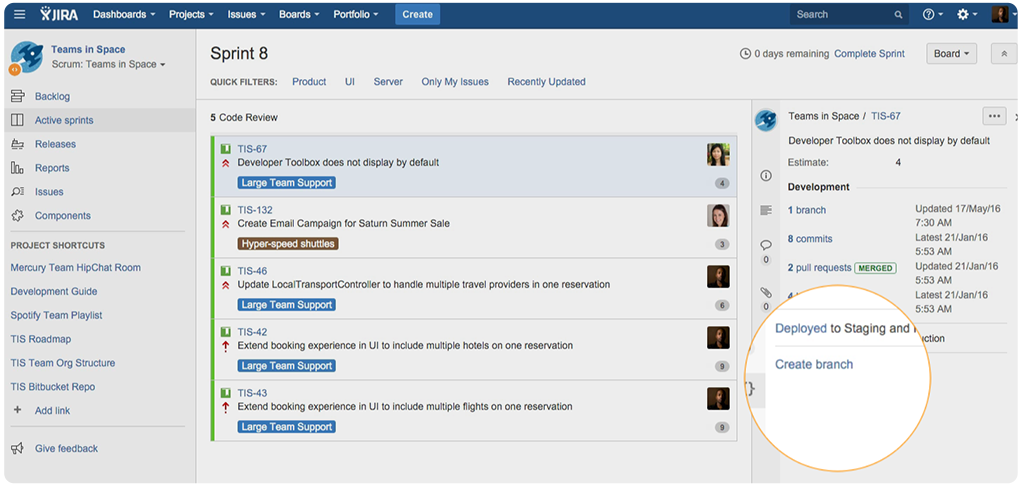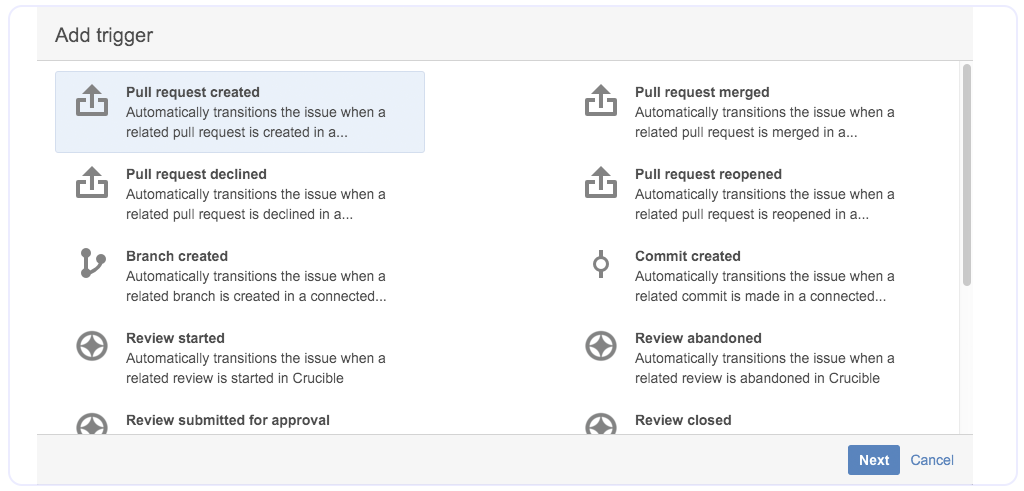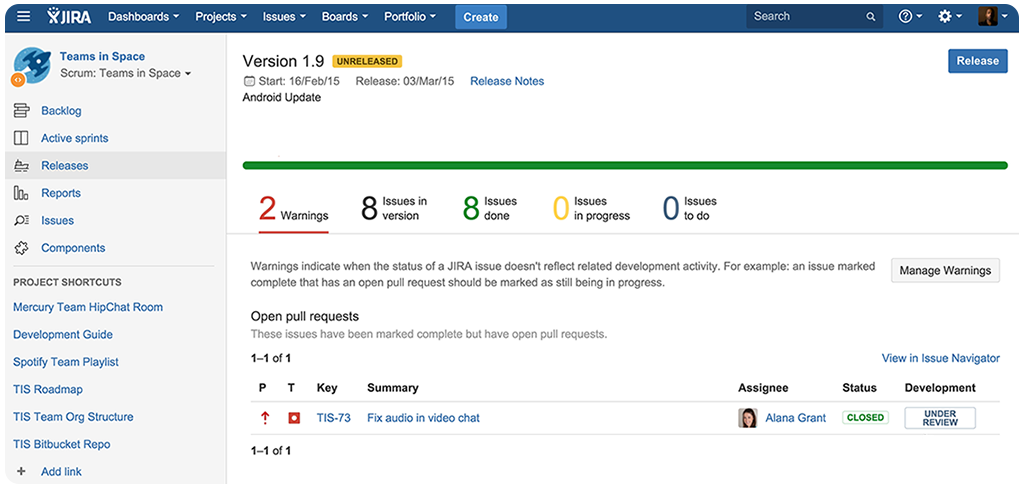In the world of software, dev speed is critical. Better to add that highly-requested feature to your product today than see it show up in a competitor’s product tomorrow.
We did an extensive study amongst our users and found teams who have JIRA Software and Bitbucket integrated release 14% more often (when compared to teams using just one of those products). Part of the difference is that these teams chose JIRA Software and Bitbucket because they support the practices high-performing teams already want to adopt: agile planning, branch-based development, and continuous delivery. The other difference is due to the tools themselves: they help teams move faster.
So how do you maximize our integration between JIRA Software, the #1 software development tool used by agile teams, and Bitbucket? I’m glad you asked. Here’s an overview of what the integration does, as well as how easy it is to set up. I’ll also link you to documentation that can guide you through the steps in more detail.
Step 1: Connect JIRA Software and Bitbucket in less than a minute
Yes, you read that correctly. Linking your JIRA Software and Bitbucket instances now takes about 30 seconds. To quote Bruno Mars, “Don’t believe me – just watch.” Watch this 30-second video, that is:
Once you’ve linked JIRA Software and Bitbucket, your team will enjoy integration features that support faster release cycles through JIRA Software’s development panel, workflow triggers, and the release hub.
Step 2: Branch from within JIRA Software and activate the dev panel
With JIRA Software and Bitbucket talking to one another, engineers can save time by creating branches directly from the development panel inside any JIRA issue. Branching this way means less app-switching, and JIRA Software even pre-populates Bitbucket branch names based on the issue’s key and summary. With the issue key included in the branch’s name, information about commits, build, pull requests, and deploys is automatically sent back to the issue so it’s all in one place.
This integration is great for the rest of the team, too. With everything about the issue’s development updating in realtime, your team will spend less time shoulder-tapping one another for status updates and more time moving towards the next release.
Creating branches locally? No problem. All of the visibility and benefits of the development panel described above works exactly the same.
Step 3: Configure workflow triggers on a customized workflow
JIRA Software and Bitbucket’s integration also lets you set up workflow triggers that will speed up the development process even more. Triggers can be added to any workflow status, which means that an action in Bitbucket can automatically update the status of a JIRA Software issue.
For example, you can set up a workflow trigger to automatically transition an issue from “To Do” to “In Progress” as soon as a developer creates a branch for the issue. Or you might need an issue to move from “In Review” back to “In Progress” if a pull request is rejected.
Workflow triggers allow engineers to spend more where it counts, free them from having to manually update issues, and make sure JIRA Software’s dev panel is always up to date for the rest of the team. To add workflow triggers to your custom workflow, edit your workflow from the JIRA administration console and then click on “Triggers” within your chosen transition. For more workflow triggers use cases, check out this post.
Step 4: Release ahead of schedule with real-time release readiness
Once your team is taking advantage of the development panel inside JIRA issues, they’ll also begin benefiting from another feature: the release hub. The release hub dashboard gives a detailed – and automated – view of the progress of a release, replacing the manual process of checking individual issues for release readiness.
Release hub aggregates all the relevant information associated with an upcoming release. Then it generates warnings if it finds unreviewed code, open pull requests, or failing builds related to issues scheduled for release. This gives software teams the ability to track and release work in a more programmatic fashion, which tightens release cycles by a factor of days (if not weeks).
The release hub can be found in JIRA Software’s sidebar in the “Release” section. From day one of development to the hour before a release, release hub brings real-time release readiness to every member of your software team.
1 + 1 = 14%
It’s no coincidence that teams who have JIRA Software and Bitbucket connected are able to release 14% more often than teams who aren’t using these two tools together. With increased visibility, fewer status meetings, and real-time release readiness at your fingertips, every member of your team can accomplish more with greater speed and confidence. Automation of manual tasks means more efficiency and accelerated development cycles. And the best part is that we’re just getting started.
So if you could release software 14% more often, why wouldn’t you? Visit our JIRA Software/Bitbucket integration page to learn more and see these integrations in action.
See what JIRA Software and Bitbucket can do
Did you find this post helpful? Share it on your social network of choice so your fellow software makers can learn from it, too!


